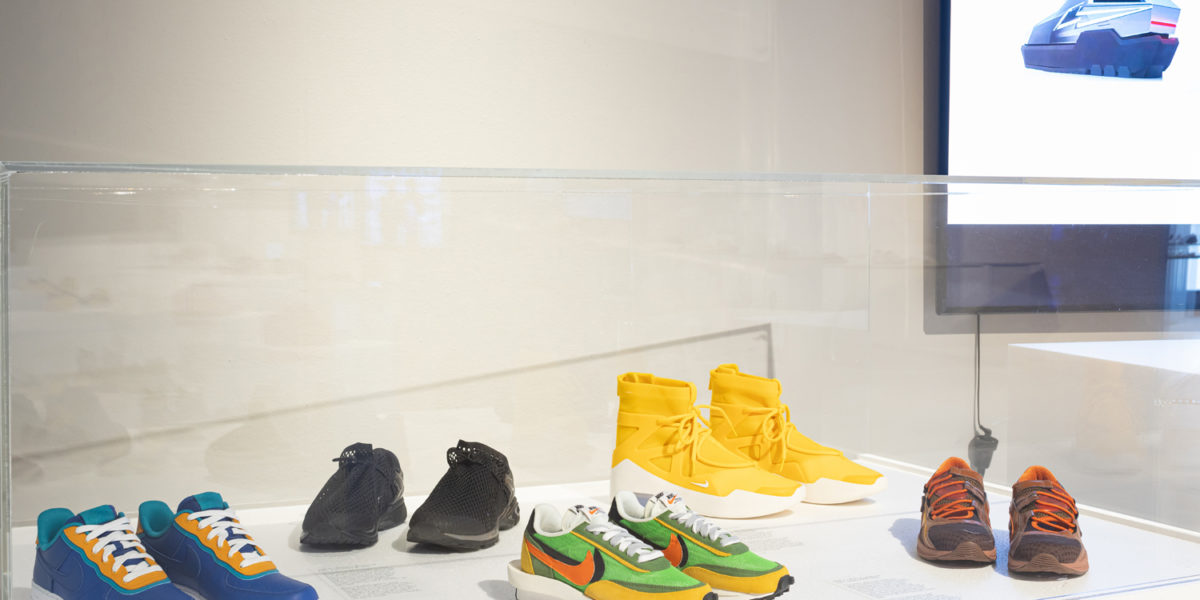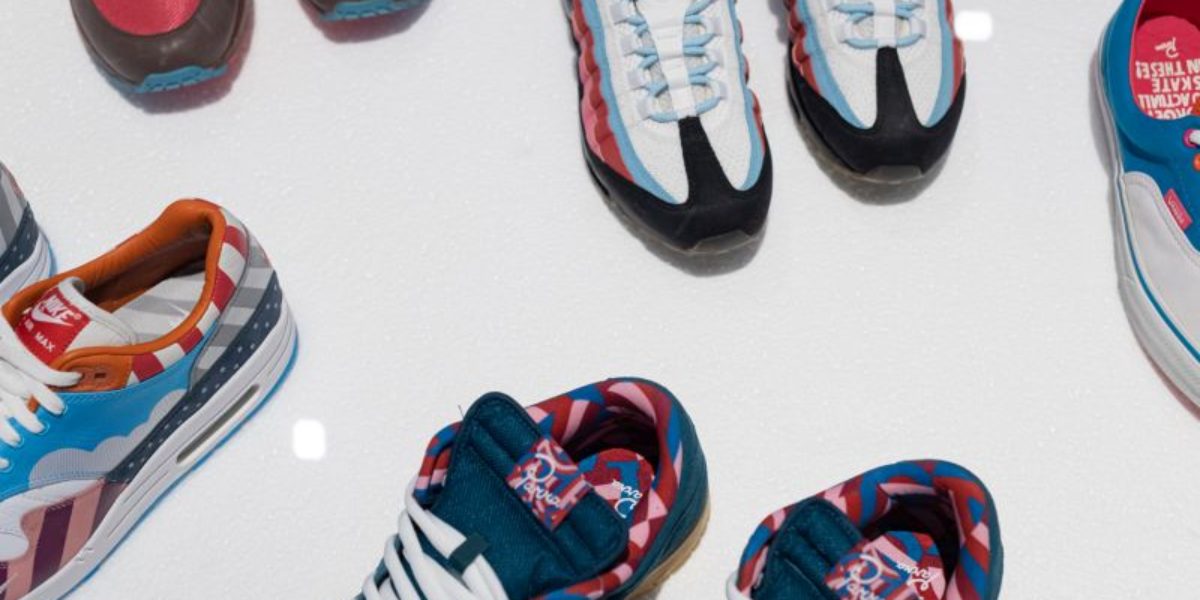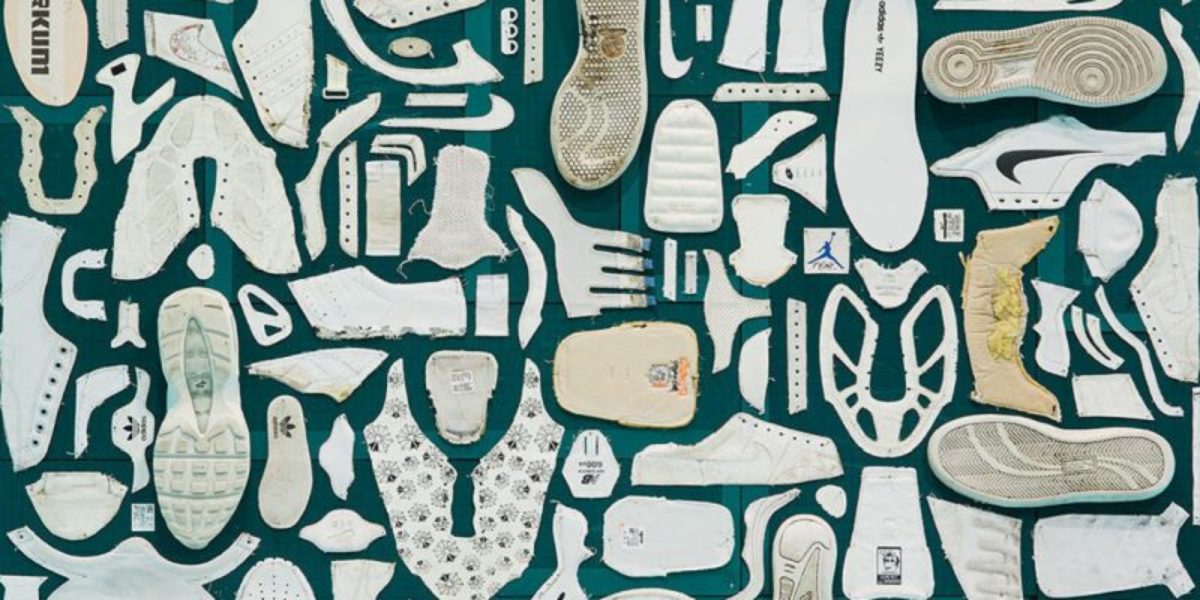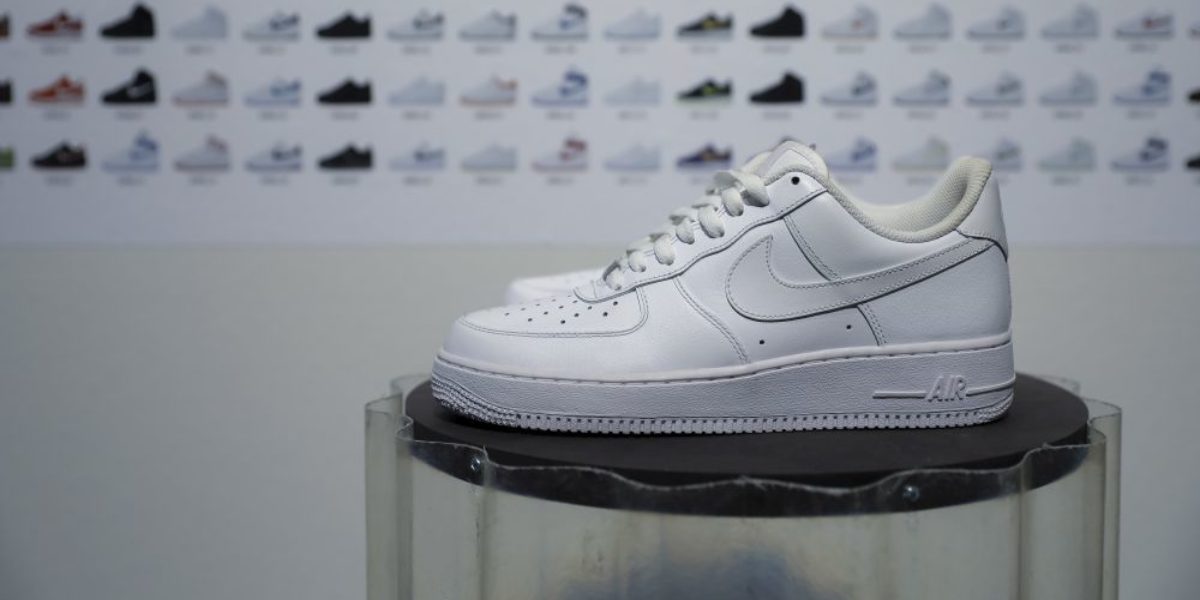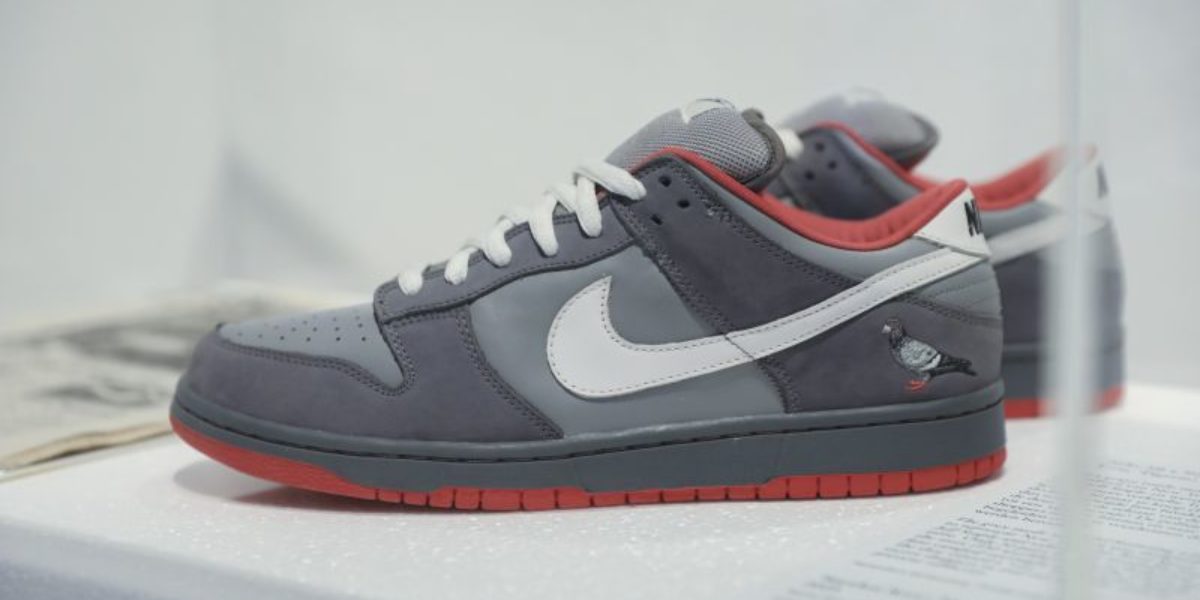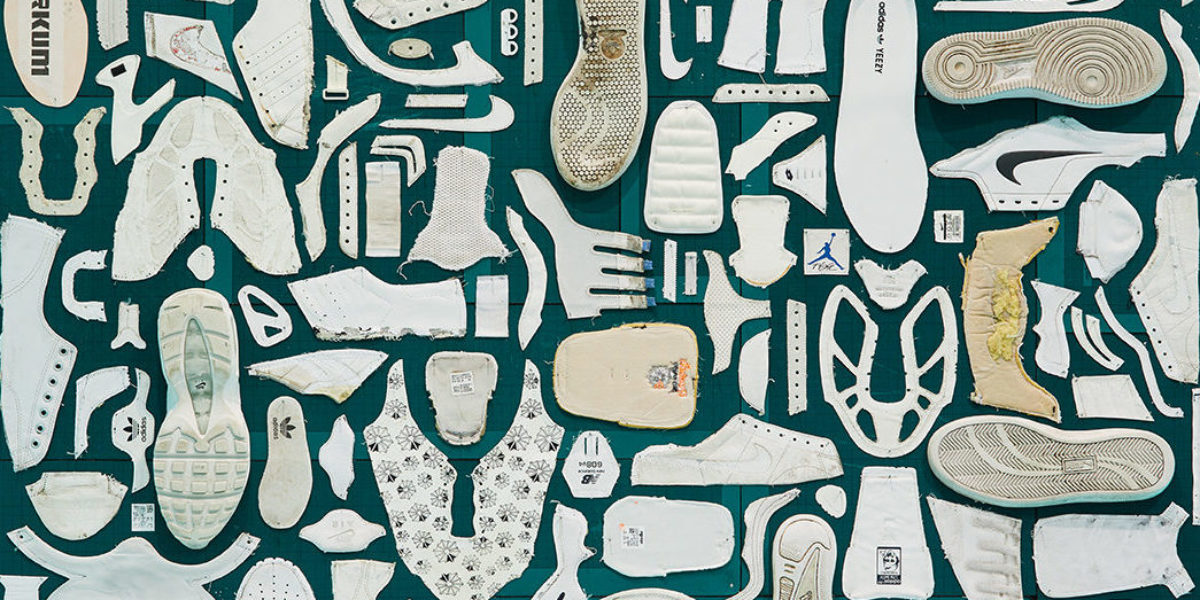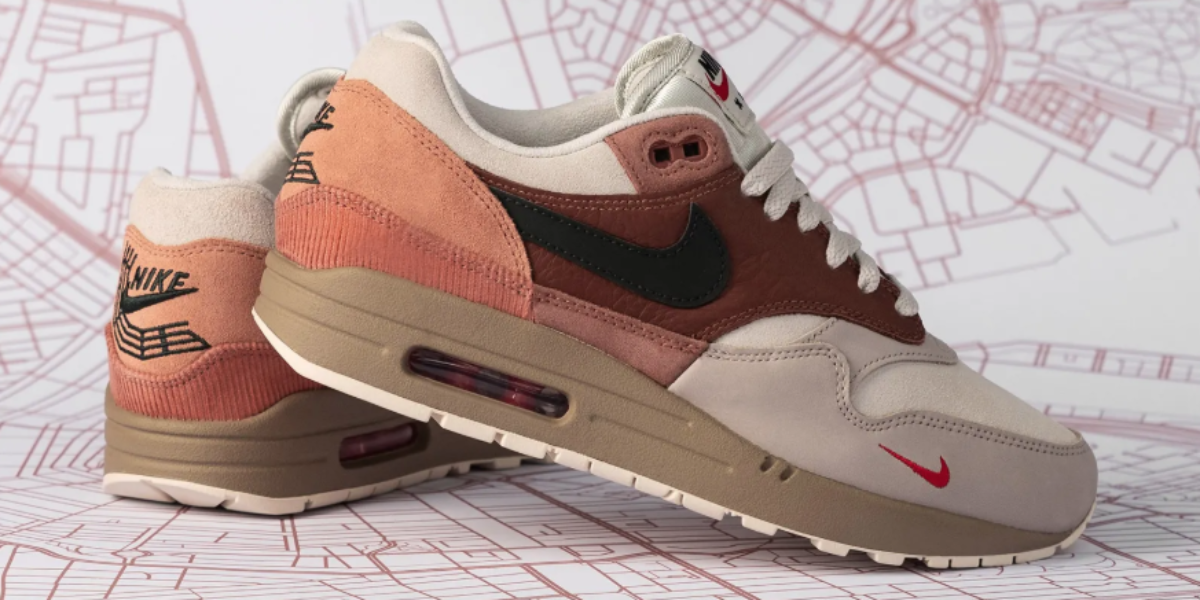Most sports shoes that we now think of as innovative or groundbreaking arose from a need to meet a core set of interconnected design concerns. Factors such as traction, fit, stability, cushioning and energy return can help to improve athletic performance. These concerns are continually revisited by designers, as brands engage with new technologies and emerging research in sports science, in a quest to make their shoes technically the best.
The most urgent issue facing designers and consumers today is sustainability. Innovation in materials, experimental manufacturing techniques and increased transparency in supply chains are some of the ways in which brands are tackling the environmental impact and human cost of sneaker production. Designers and customisers are also developing more sustainable methods by extending the lifespan of sneakers through upcycling, remaking and refurbishing.
Cushioning
Designed to absorb shock and minimise the impact of activity on the body’s joints and tissues, cushioning is an important design concern of athletic footwear. Provided mainly by the midsole of a shoe, cushioning has generated some iconic and innovative designs over the years. Almost every brand has its own name and trademark for their own cushioning solution, replacing the once-dominant ethylene vinyl acetate (EVA) foam.
Traction
Traction, or grip, is perhaps the starting point in sneaker history. Vulcanised rubber soles gave sneakers their name, as you could ‘sneak’ around quietly in them. Made from a by-product of the rubber industry, many early sneakers were produced by tyre companies, such as Goodyear or Dunlop. The effectiveness of traction is still an important part of the design process. This requires balancing the surface type and ratio of the sole, and its pattern and composition, to create models that meet the physical demands of specific sports.
Barefoot
Barefoot is a design movement that is at once closely linked to cushioning and its antithesis. It champions the idea that the closer we are to being barefoot, the better for our bodies. These designs shun cushioning, and instead try to use the natural protective mechanisms of our feet, such as widely-spread toes, even distribution of pressure across the foot, and a natural range of motion. The benefits are improved foot flexibility, balance and strength.
Energy return
Energy return describes the amount of energy exerted by a runner that a shoe does not absorb. Sports shoes that strike a balance between cushioning and firmness allow
for a ‘bounce back’ that can be helpful for long-distance running. Some of the most innovative running shoes claim up to 5% energy return, which has resulted in several athletics records being broken. Such results spark a recurring debate around where sports equipment ends and technical doping begins.
Fit
Creating a proper fit that is adjustable and holds your foot in place without being restrictive has been an important consideration throughout the history of sneaker design. This was first addressed most simply with laces. But the challenge of customised fit has inspired a variety of solutions, from laceless systems originating in ski boots and inflatable air bladders built into shoe uppers, to the use of NASA-developed elite fibres and newly invented knitting techniques to craft supportive uppers.
Climate control
Material innovation has been particularly important in enabling designers to create sports shoes that can function in various weather conditions and help athletes to avoid overheating. Early models of sneakers used mesh fabrics to allow airflow and nylon to keep the wearer’s feet dry. These were later replaced with innovative fabrics such as Gore-Tex, ClimaCool, and FutureLight, all of which promise a combination of cooling and protection.
Integrated technology
Sneaker brands have been integrating performancetracking technology into footwear since the 1980s. This involves built-in electronics that measure running distance, average speed or the number of calories burned. Later innovations include adding into the heel and devising self-lacing shoes. Blockchain technology has also been used to combat counterfeiting and to allow sneakers to be traced and resold securely.
Stability
Activities that require fastpaced movement – such as basketball, tennis and aerobics – demand sneakers that are designed with stability in mind. In order to reduce the risk of injuries such as twisted ankles, and to increase motion control, each part of a shoe is mined for its potential to provide extra stability. Design decisions, such as extending the height of an upper or adding components to the midsole, aid the foot’s natural range of motion.
